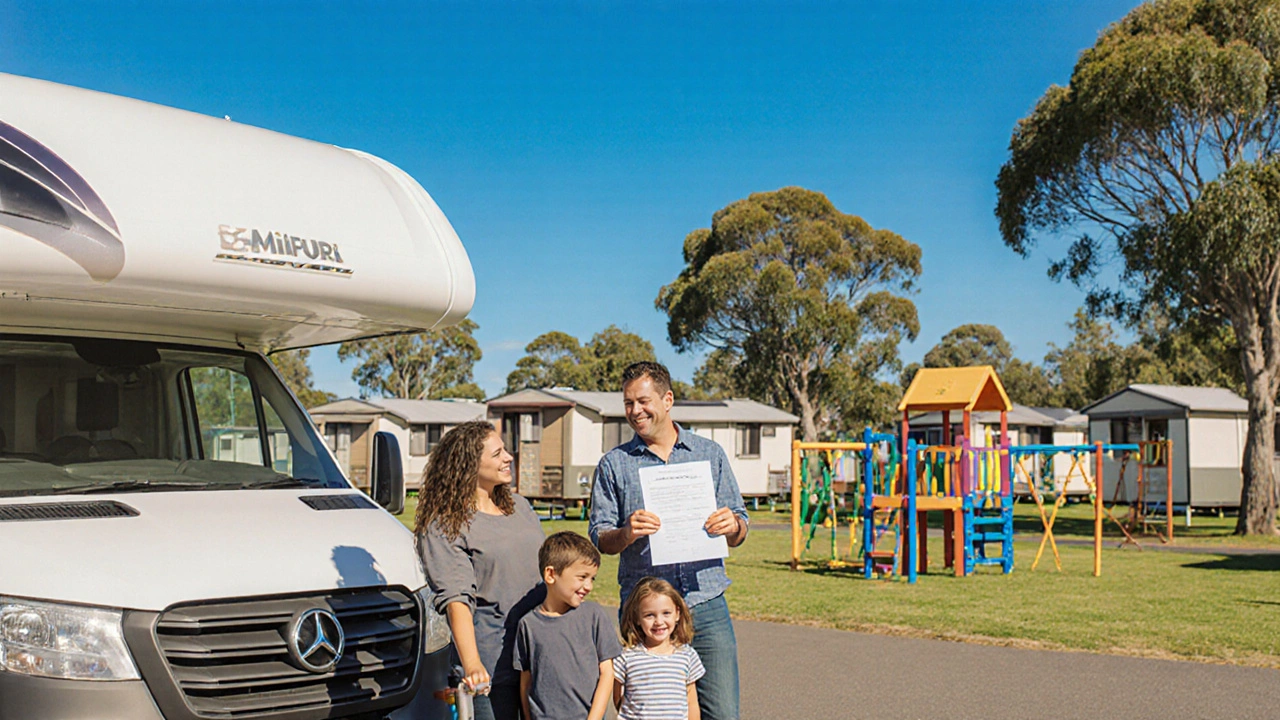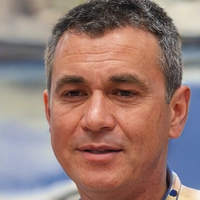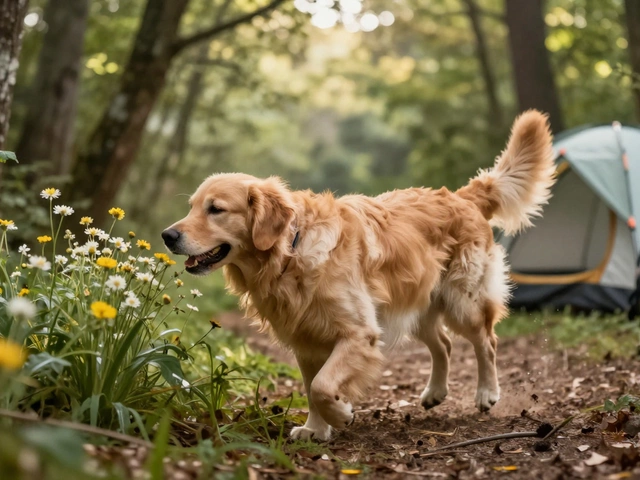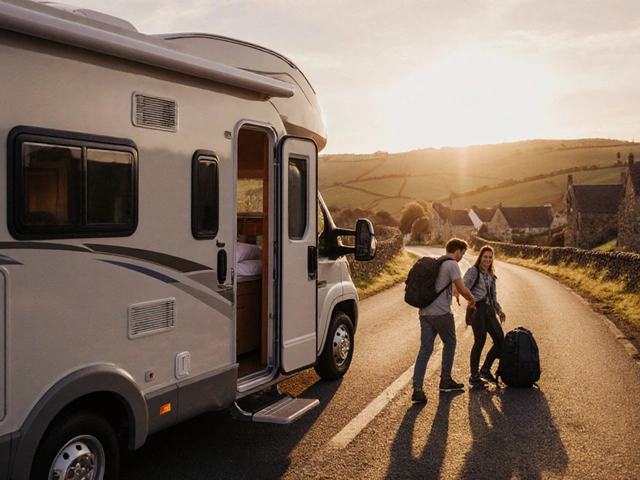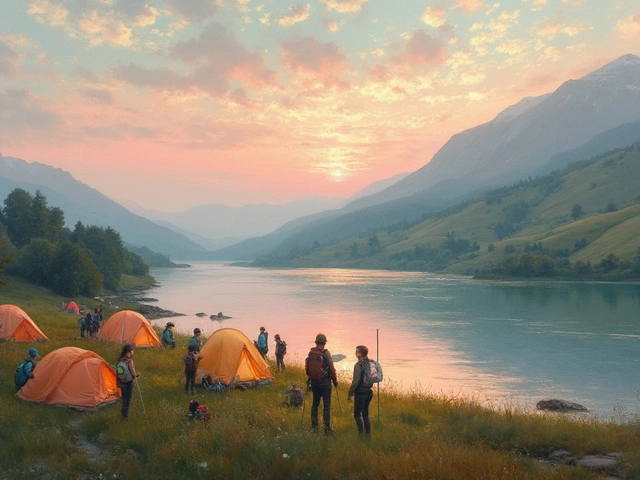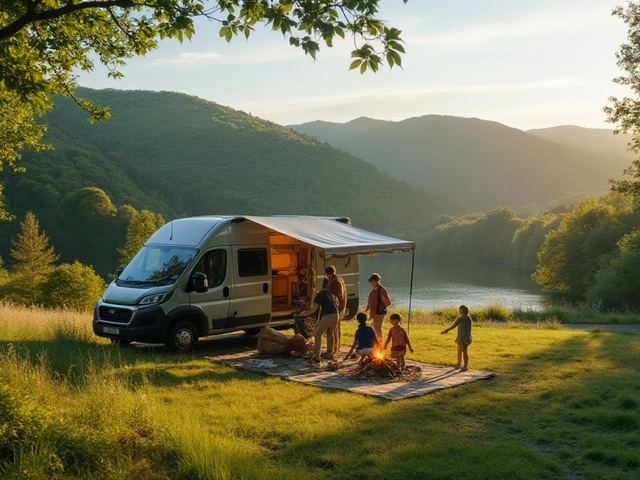Campground Living Budget Calculator
Calculate your estimated monthly costs for year-round campground living in Australia. Input your specific details to get a personalized budget estimate based on article data.
Input Your Details
Estimated Monthly Costs
Based on your inputs:
- Site lease: $0
- Electricity: $0
- Water & sewer: $0
- Internet: $0
- Vehicle insurance & registration: $0
- Maintenance & fuel: $0
Total: $0
*Prices may vary based on location and seasonal factors
Quick Takeaways
- Year‑round campground living is legal in most Australian parks if you secure a long‑term lease.
- Budget hinges on site fees, utilities, and vehicle maintenance - plan for $800‑$1,500 per month.
- Choose a site with reliable electricity, water, and internet; off‑grid options need solar and satellite gear.
- Seasonal weather dictates insulation, heating, and bug‑proofing strategies.
- Community vibe varies: family‑focused parks offer kids’ programs, while motorhome‑centric sites host full‑time nomads.
When people wonder if they can year-round campground living is a viable lifestyle, the answer is a cautious yes-if you plan right.
Year-round campground living is a style of permanent residence where the homeowner rents or owns a campsite and stays there throughout all seasons, often using an RV, motorhome, or caravan. It’s not a fleeting weekend habit; it’s a full‑time commitment that blends the freedom of travel with the stability of a home base.
Understanding the Lifestyle
The core idea is simple: you park your mobile dwelling on a designated site and treat it like a house. That means cooking, showering, paying bills, and even sending kids to school if you’re near a town. The biggest difference from traditional housing is the need to manage utilities and space inside a confined vehicle.
Two main vehicle types dominate the scene:
- Recreational Vehicle (RV) - a motorized unit with built‑in living quarters.
- Motorhome - similar to an RV but often larger and geared toward long trips.
- Caravan - a towable trailer that you hitch to a car or truck.
Which one you pick shapes your budget, the sites you can access, and the level of comfort you’ll enjoy.
Legal and Regulatory Landscape in Australia
Unlike some U.S. states where “live‑in” rules are murky, most Australian councils have clear policies for long‑term campsite occupation. The key document is the Site lease agreement, which outlines permitted stay length, fees, and any restrictions (like no permanent structures).
Things to check before signing:
- Does the park allow stays longer than 30 days? Many require a minimum 12‑month lease for full‑time residents.
- Are there caps on the number of occupants? Family campsites often allow up to 6‑8 people.
- What are the rules for waste disposal, pet ownership, and fire safety?
- Is there a clause for seasonal price adjustments? Some parks hike fees during winter due to heating demand.
Consult your local council’s planning department if you’re unsure. In New South Wales, for example, the “Temporary Accommodation” classification covers most caravan parks, but the council can impose extra permits for solar arrays or permanent water tanks.
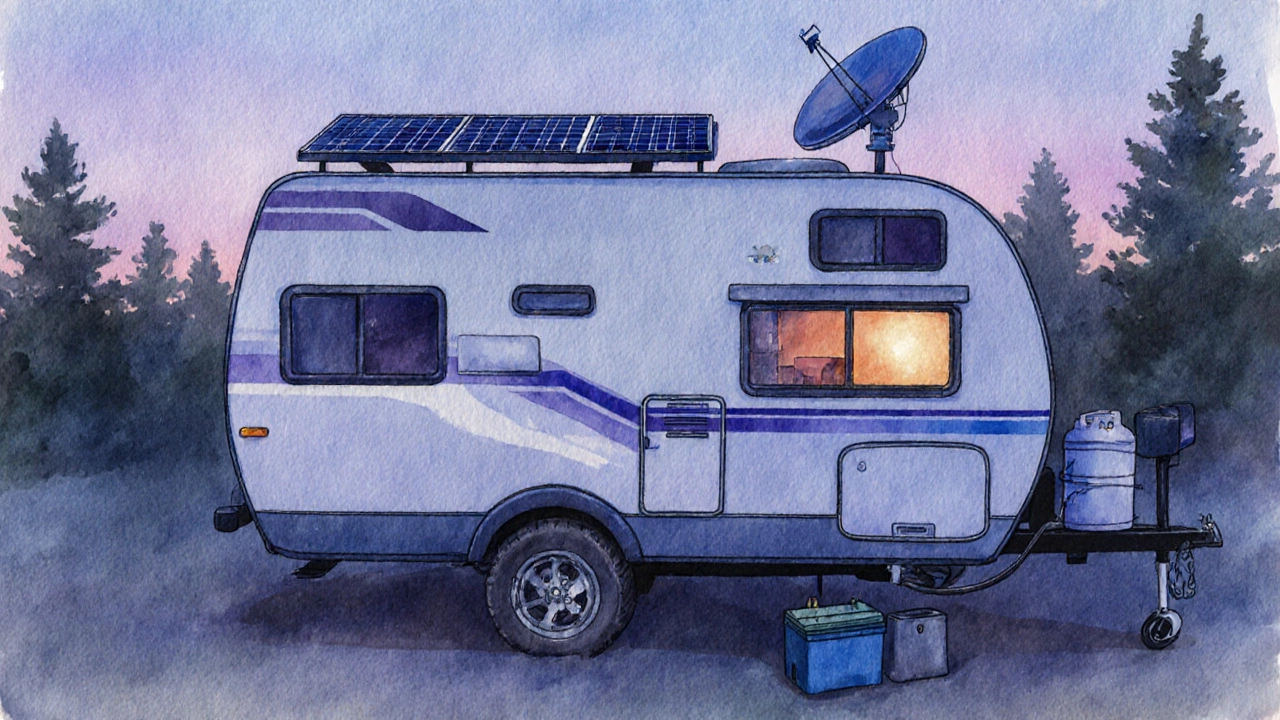
Financial Realities
Budgeting is the toughest part because costs fluctuate with season and location. Here’s a typical monthly breakdown for a family of four living in a mid‑range park near Sydney:
| Expense | Low Season | High Season |
|---|---|---|
| Site lease | $800 | $1,200 |
| Electricity (hook‑up) | $120 | $180 |
| Water & sewer | $80 | $120 |
| Internet (satellite) | $70 | $70 |
| Vehicle insurance & registration | $150 | $150 |
| Maintenance & fuel | $200 | $300 |
| Total | $1,520 | $2,020 |
Remember to factor in one‑off costs like a new solar panel system or an HVAC upgrade for winter comfort.
Practical Logistics: Power, Water, and Connectivity
Three utilities keep the lifestyle afloat:
- Utilities hookup - most family campsites provide 30 A or 50 A power points, plus fresh water and grey‑water drains.
- Off‑grid solar - ideal for parks without reliable grid access. A 400 W panel with a 2 kWh battery can run lights, a fridge, and a small air conditioner.
- Internet connectivity - 4G LTE routers work in most urban parks; remote sites may need satellite dishes (e.g., Starlink).
Seasonal weather adds extra layers. In winter, you’ll want a diesel heater or a propane furnace; in summer, window screens and a portable evaporative cooler keep bugs out and the interior cool.
Choosing the Right Site for a Family
Not every campsite is created equal. Here’s a checklist to narrow down options:
- Proximity to schools, medical centres, and grocery stores - essential for families with kids.
- Family campsite designation - these sites often have larger plots (up to 12 × 12 m) and playgrounds.
- Year‑round utilities - confirmed power, water, and waste services throughout the year.
- Community vibe - some parks host weekly BBQs, kids’ clubs, and craft workshops.
- Climate resilience - locations with mild winters (e.g., Sunshine Coast) reduce heating costs.
When touring a park, ask the manager for a copy of the lease, a breakdown of seasonal fees, and any extra charges for trash collection or firewood.
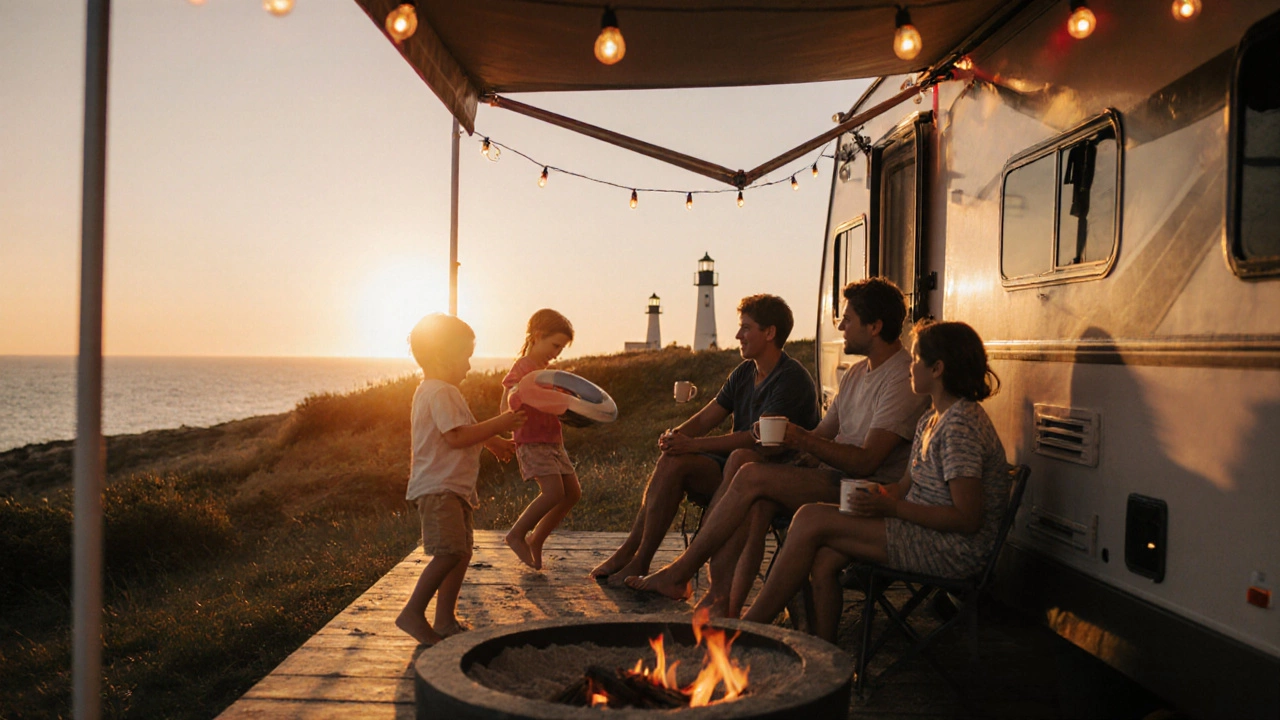
Day‑to‑Day Life: Routines and Community
Living on a plot feels like a hybrid of house‑hold chores and travel‑era creativity. Typical routines include:
- Morning coffee on the deck while the kids do a quick jog around the park.
- Cooking meals in a compact RV galley; many families batch‑cook on weekends to save fuel.
- Weekly grocery runs to the nearest supermarket - plan for a one‑day stock‑up to minimise trips.
- Engaging with neighbours: swap toys, share a garden plot, or organise a movie night under the stars.
Because space is limited, decluttering becomes a skill. Store seasonal clothing in vacuum‑sealed bags and keep a “donate box” for any gear you no longer need.
Tips to Make Year‑Round Living Sustainable
- Invest in good insulation. Spray‑foam or reflective blankets drastically cut heating bills.
- Set up a rainwater harvesting system. A 200‑liter tank can supplement mains water during dry spells.
- Choose an energy‑efficient fridge. Models rated A++ use half the power of older units.
- Plan for waste. Use biodegradable soaps and pack out what the park doesn’t accept.
- Stay flexible. If a severe storm hits, have a contingency plan to move to a nearby park with better shelter.
Most families find that the freedom to wake up by the beach or forest after a short drive outweighs the logistical quirks. Over time, the routine becomes a lifestyle people rarely want to give up.
Frequently Asked Questions
Can I stay in a campground permanently without a lease?
Most parks require a formal lease for stays longer than 30 days. Without a lease, you risk eviction and loss of utilities.
What are the main cost differences between an RV and a caravan?
RVs include the engine and usually have higher upfront costs ($80‑$150k) but save on towing expenses. Caravans are cheaper to buy ($40‑$70k) but require a suitable tow vehicle and add fuel costs.
Is it legal to install solar panels on my campsite?
Yes, provided the park’s lease permits modifications. Some parks require approval to ensure panels don’t block neighbours’ sunlight.
How do I handle winter heating in a coastal campground?
A diesel heater paired with proper insulation works well. Many families also use portable electric blankets powered by the site’s 240 V hookup.
What internet options are reliable for remote work?
4G LTE routers with external antennas cover most populated parks. For truly remote sites, Starlink satellite internet provides speeds up to 150 Mbps.
Can I have pets at a family campsite?
Most family campsites allow dogs and cats, but there may be size limits and a cleaning deposit.
What insurance do I need for year‑round living?
A comprehensive RV insurance policy covering vehicle, contents, and liability is essential. Some insurers also offer a “home‑on‑wheels” add‑on for permanent residency.
